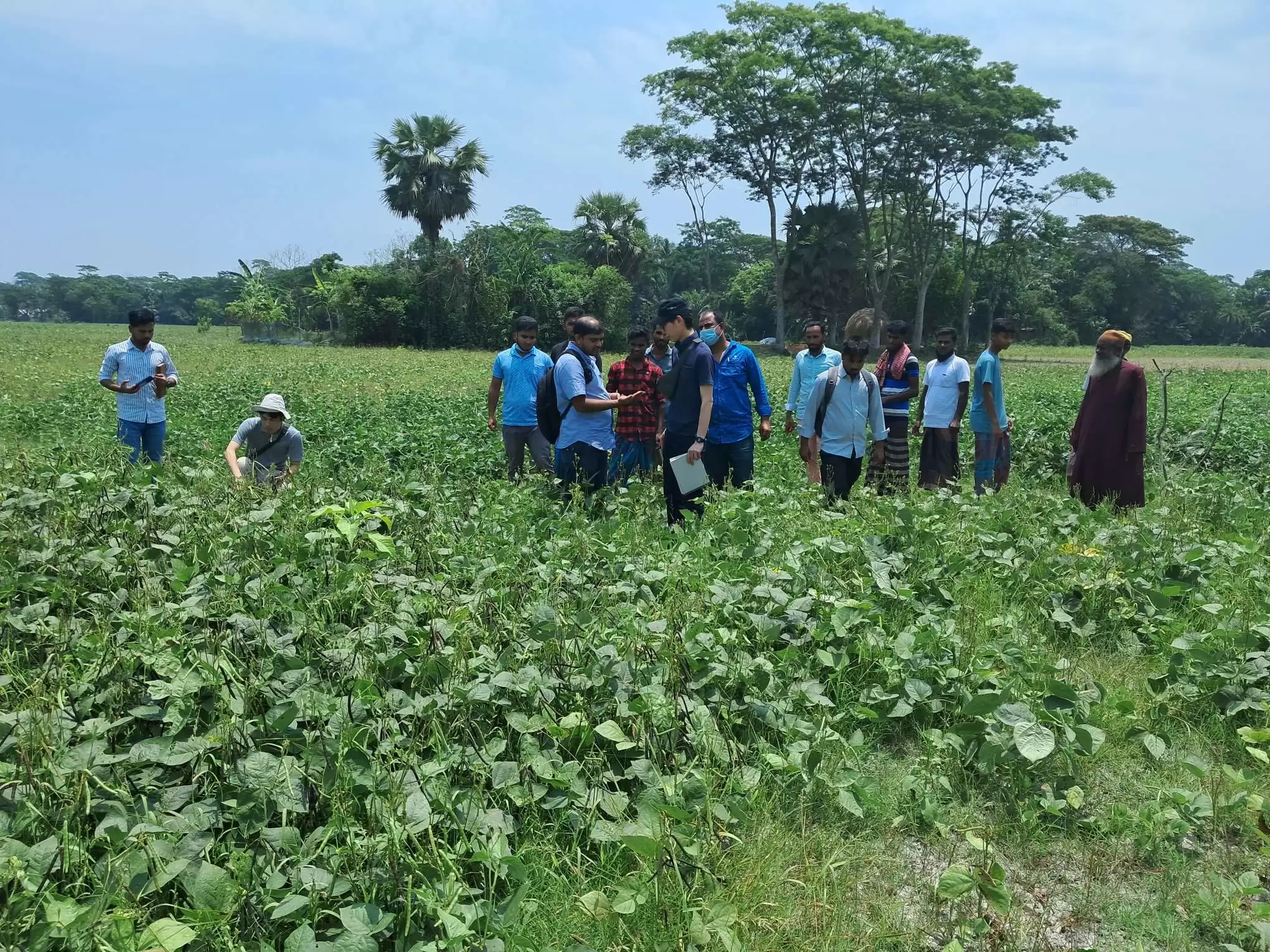Mungbean/Greengram (Vigna radiata) is one of Bangladesh’s most important pulses. Many places in Bangladesh are suitable for mungbean, among them Patuakhali, Borguna, and Bhola these southern districts are widely cultivated which is about 80% of total Mungbean production in Bangladesh. In Bangladesh, mungbean is traditionally cultivated both in Robi& Kharif season, about 54982 hectares of land and about 34,400 m tons of grains are produced. Jun 18, 2021.
Accroding to Md Nazrul Islam, Deputy Director of the Patuakhali DAE, about 86,000 hectares of land in the region were used to cultivate mung bean last year. Jan 2, 2023
Mungbean grows well under clear sunshine and low humidity conditions. Cloudy weather and continuous or heavy rainfall may however cause problems like pests and diseases. Mungbean is nutritious rich in protein and good for your health.
Bangladesh has many mungbean varieties as well as newer ones. Both types are still widely cultivated in southern Bangladesh. The newer varieties were developed by the Bangladesh Agricultural Research Institute (BARI) and Bangladesh Institute of Nuclear Agriculture (BINA), as well as Bangabandhu Sheikh Mujibur Rahman Agricultural University (BSMRAU) and BRAC.

Traditional varieties are – Sona mung &Barisal local Mung. BARI’svarieties are BARI Mung-2 (Kanti), BARI Mung-3 (Progoti), BARI Mung-4 (Rupsha), BARI Mung-5 (Taiwani), BARI Mung-6, BARI Mung-7&BARI Mung-8. BINA’svarieties are BINA Mung-3, BINA Mung-4, BINA Mung-5, BINA Mung-6,BINA Mung-7 & BINAmung-8. BSMRAU’svariety is BU Mung-4 and BRAC’s variety is Holud Mung.
BARI’s maximum variety maturity by 55-65 days which is the same for BSMRU and BRAC where as BINA’s varieties maturity by 65-85 days.
Grameen Euglena is working with small and medium farmers since 2011 already a decade for the development of agriculture in Bangladesh and boosting the socioeconomic status by contact farming under the Social Business Concept. Our mungbean project is based in Sadar, Bauphal, Dashmina and Golachipa of Patuakhali district which is operating through dedicated, well-trained export quality productionknowledgeable agriculturist field staff guided and supervised by Japanese experts.
About 10,000 farmers are connected with us and we are working with about 7000 farmers in a group-based approach. Farmers are well informed and trained by Grameen Euglena about export quality mungbean production applying Japanese technology for better quality. We introduce and advise farmers to adopt modern technology with the collaboration of BARI, DAE, Govt, international and national institutes as a catalyst and linkage-building activities for the development of the agriculture sector of Bangladesh as well as creating export opportunitiesto Japan market. Parallel creating work opportunities at the marginal level through creating women empowering by group-based approach.
Grameen euglena purchase and collect mungbean only directly from the homes of farmers in a proper method of its own management cost on the basis of the quality of who produced mungbean. Whatever we purchase we could export only 60% of the total purchased mungbean according to policy and Govt permission. After purchase, we do the entire process of transportation, lot management, and quality checking in our primary warehouse. Send it to the second warehouse and factory situated in the middle place Ishwardi of Pabna district in the northwest of Bangladesh. In Ishwardi there are modern Japanese machines with a well-designed factory for the grading and separation of export size and quality mungbean stock keeping warehouse until export. Rest non-exportable mung beans are sold in the market.
Japan’s market demand is bold in size which is over 3.5mm and the 100 seed weight is over 6g and greenish colour seed. Japanese people consume it after making sprouts which are called Moyashi (in Japanese).
Currently, BARI Mung-6 only has the potential to partially meet-up the export criteria. Through the improvement and development of export quality mungbean field, we could bring good revenue.




